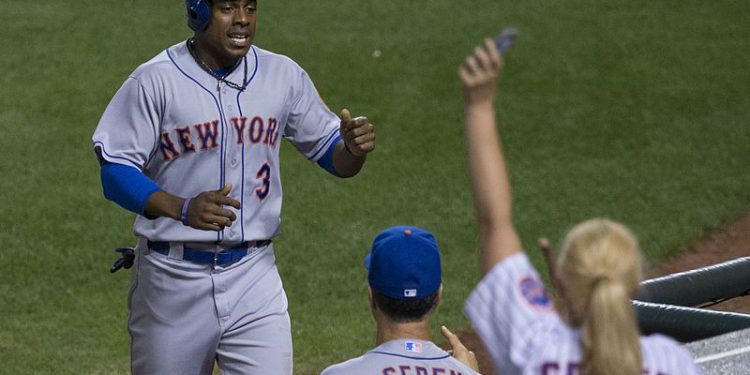For the New York Mets, the 2015 season has been a long one. Poised to post the team’s best record in ages, this year’s squad has enjoyed some incredible highs, like an 11-game winning streak in April and mid-summer sweep of the Washington Nationals, and lows, the botched trade for ex-Brewer Carlos Gomez and news of team captain David Wright’s degenerative back condition.
However, through it all, the Mets have been able to keep winning and are now six games in front of Washington in the National League East. With a postseason berth now basically guaranteed, we can at last take some stock of the real difference-makers for the team this year. Young starters Jacob deGrom and Matt Harvey have been excellent, while the midseason acquisitions of Yoenis Cespedes, Kelly Johnson and Juan Uribe reinvigorated a floundering lineup and transformed it into an offensive juggernaut. Since the non-waiver trade deadline, the Mets have been scoring 5.72 runs per game, the best clip in the majors.
Despite all of these big names, though, none of them have been the biggest reason for the Mets’ surprising success in 2015. That distinction belongs to outfielder Curtis Granderson.
Granderson would have once been considered a longshot to become a true New York icon and one of the faces of Big Apple baseball. Anything can happen, however, and in the winter of 2009 the longtime Detroit Tiger was shipped to the Yankees as part of a blockbuster deal that also included the Arizona Diamondbacks. Names like Max Scherzer, Austin Jackson and Ian Kennedy were also moved as part of that deal, but none of them have accumulated as much value as Granderson has over the years.
After four seasons with the Yankees, Granderson defected to Queens and signed a four-year deal with the Mets. Although his tenure in Flushing got off to a disappointing start in 2014, he has been tremendous this year, parlaying 23 home runs and an OPS+ of 125 into 4.7 WAR, the highest mark on the team. In addition, Granderson’s .364 OBP has allowed him to perform solidly in the leadoff role, and his 11 stolen bases are his most since 2011.
Granderson is more than just an athlete, however. One of the MLB’s few remaining African American ballplayers, he has been vocal in his support of reviving baseball in America’s inner cities. In the last 29 years, the percentage of African Americans in MLB dropped from 19 to less than seven.
In an effort to help soften this decline, Granderson donated millions of dollars to fund a stadium at the University of Illinois-Chicago, his alma mater. Curtis Granderson Field hosts Little League and high school games and is gearing up for the Chicago public school championships.
Still, Granderson’s life is baseball, and he looks more ready than ever to make a run at his first ever World Series. Whether he gets it or not — and helps end an almost-30 year title drought for the Mets — he’ll continue to be one of the true consummate professionals of New York sports.





